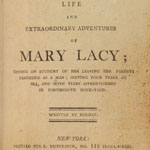 |
Mary Lacy. The Life, Travels, Voyages, and Daring Engagements, of the Celebrated Paul Jones. To Which is Added The Life and Extraordinary Adventures of Mary Lacy; Giving an Account of Her Leaving Her Parents Disguised as a Man. New York: Printed for E. Duyckinck, 1809.
Mary Lacy lived and worked for over a decade disguised as a man named “William Chandler.” Working as a domestic servant, Mary decided to run away: “ . . . a thought came into my head, to dress myself in man’s apparel, and set off by myself.” She boarded the ship Sandwich and sailed for four years. She then began a carpenter’s apprenticeship. A rumor spread that she was a woman, and when the carpenter and mate confronted her, she confessed. Amazingly, they agreed to keep her secret and she completed the apprenticeship. She later was found out to be a woman again, at which point she returned home to live her life as a woman. Lacy was granted a pension and eventually married. |
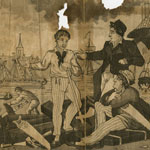 |
Mary Lacy’s Sex Discovered by the Workmen in Portsmouth Dock Yard. Aquatint, ca. 1800. Gift of Helen Beitler.
After serving several years as a male sailor on board a ship, Lacy continued her life as a man as a shipyard apprentice at the Portsmouth Dockyard. Ill health, rather than the revelation of her true gender, ended Lacy’s time at the dockyard. |
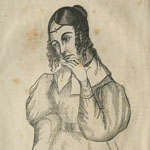 |
Ellen Stephens. The Afflicted and Deserted Wife: Or, Singular and Surprising Adventures of Mrs. Ellen Stephens. New York: C. F. Daniels, 1842. Gift of Lloyd P. Smith.
Ellen Stephens wrote about her experiences as a cautionary tale about the importance of choosing a husband. She married an intemperate gambler who “not only deserted me penniless, but absconded with my innocent babe!” Hearing that he boarded a steamboat with another woman and her child, she cloaked herself in her husband’s clothes and pursued him. She worked as a cabin boy travelling on the Mississippi River tracking them. After six months, while living with her parents, her husband finally returned with the child. |
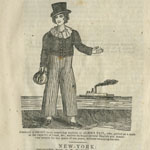 |
Annexed is the Still More Surprising Exploits of Almira Paul, Who, Garbed as a Male in the Capacity of Cook, &c., Served on Board Several English and American Vessels for the Space of Ten Years, Without Betraying her Sex. New York: C. F. Daniels, 1842. Gift of Lloyd P. Smith.
A widow with two children, Almira Paul found herself destitute without a means to support the family. Leaving her children to the care of their grandmother, Almira dressed in her late husband’s clothes and joined the Dolphin as a cook’s mate. Her pride in being as capable as the male sailors is evident: “Solicitous to obtain a complete knowledge of a seaman’s duty, and to convince the world that the capacities of WOMEN were equal to that of the men, there was not a piece of rigging on board a ship, but what I could name, and no duty but what I could perform.” |
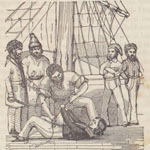 |
Emma Cole Hanson. The Life and Sufferings of Miss Emma Cole, Being a Faithful Narrative of Her Life. Boston: M. Aurelius, 1844.
Nineteenth-century fiction often used the cross-dressing character as a plot device. Here is a sensational tale of an orphan who dresses as a male sailor. Her adventures include being captured by pirates and heroically saving a child from drowning. |
 |
A Sketch of the Life of Elizabeth Emmons, or The Female Sailor. Who was Brutally Murdered While at Sea, Off the Coast of Florida, February 3d, 1841. Boston: Graves & Bartlett, 1841.
This is a fictional tale that describes the outrageous exploits of Elizabeth Emmons as a sailor and as an Indian-fighter in Florida. She reveals her true identity to a young man who proposes, and they marry. Through a letter, it is revealed to the reader that Elizabeth was killed by a crazed, drunken sailor who accidently shot her. |